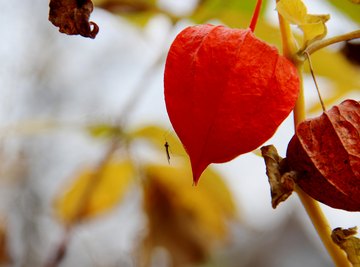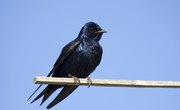
While a crane fly may look like a giant mosquito – leading to it being labelled a mosquito hawk – it is actually a completely different insect. Despite rumors to the contrary, the crane fly doesn't prey on the mosquito for food either. Other winged insects sometimes referred to as mosquito hawks are dragonflies and damselflies, which do feed on mosquitoes.
Crane Fly vs. Mosquito
The crane fly is used to refer to any member of the insect family Tipulidae, of the order Diptera, while the mosquito is a small, midge-like fly from the family Culicidae.
The biggest difference between a crane fly and a mosquito is their dietary requirements and habits. Larval mosquitoes eat algae and adult mosquitoes can survive on plant nectar. However, female mosquitoes need both lipids and proteins in their diet to be able to lay eggs, and it's for this reason that they feed on the blood of humans, animals and birds. The mosquito sticks a proboscis (a tube-shaped attachment) into the skin in order to detect a satisfactory blood vessel to suck blood from. So if you are "bitten" by a flying insect, it's likely to be a mosquito and is definitely not a crane fly.
Crane fly larvae feed on organic matter and plant nectar, building up fat reserves to rely on during their short adult lives. Compared to the mosquito, the crane fly is a gentle insect.
The main similarity between a crane fly and a mosquito is their appearance. A crane fly, despite being completely harmless, does look like a large mosquito. They are also both flying insects, and you may see both of them near water, as this is their habitat during the larval stages.
Both crane flies and mosquitoes can infest outdoor living spaces, but crane flies typically only arrive in your home by accident, and don't stay long. On the other hand, mosquitoes are happy to set up home indoors, particularly where water collects, such as in potted plants.
Dragonfly vs. Mosquito
The dragonfly belongs to the group Anisoptera from the order Odonata (meaning “toothed ones”). Insects from the Odonata order have very small antennae, very large eyes taking up most of the head, two pairs of transparent wings with tiny veins and a long, slim central body. By comparison, a mosquito is much smaller and does not have the same slender abdomen and large eyes.
Dragonflies aren’t fussy when it comes to prey – they’ll eat ants, termites and mosquitoes, which merits the name "mosquito hawk." However, unlike mosquitoes, they don’t feed on the blood of animals and humans.
Damselfly vs. Mosquito
The damselfly also belong to the order Odonata, but is part of the group Zygoptera. It is similar in appearance to the dragonfly, but has a slimmer body. The damselfly positions its wings above its body when resting, but the dragonfly lacks the hinges to be able to do the same.
Like dragonflies, damselflies eat small, soft-bodied insects, including mosquitoes.
References
- Texas A & M Agrilife Extension: Crane Flies, Not Mosquitoes
- United States Environmental Protection Agency: General Information About Mosquitoes
- The University of Maine: Crane Flies
- University of California Museum of Paleontology: Introduction to the Odonata Dragonflies and Damselflies
- Woodland Trust Nature Detectives: What is The Difference Between Dragonflies and Damselflies? And Other Facts
Warnings
- Do not allow the mosquito to bite you.
About the Author
Claire is a writer and editor with 18 years' experience. She writes about science and health for a range of digital publications, including Reader's Digest, HealthCentral, Vice and Zocdoc.
